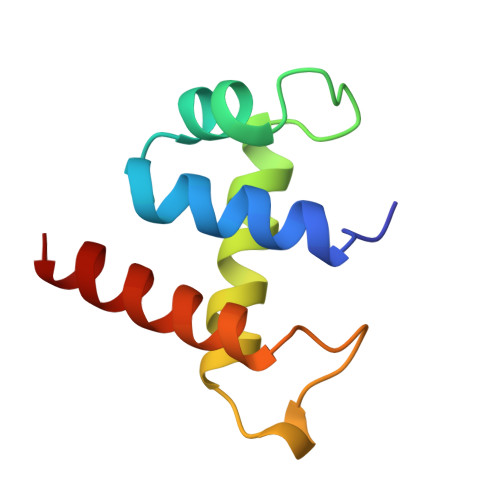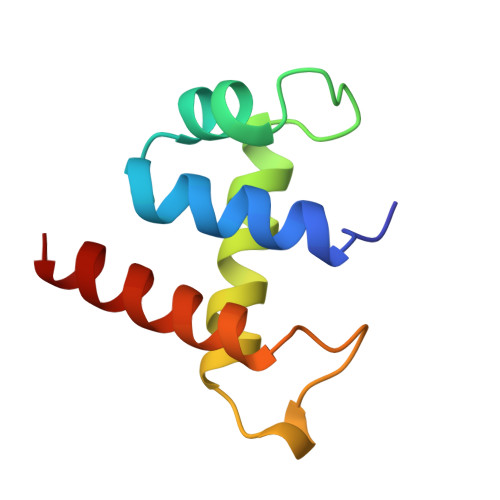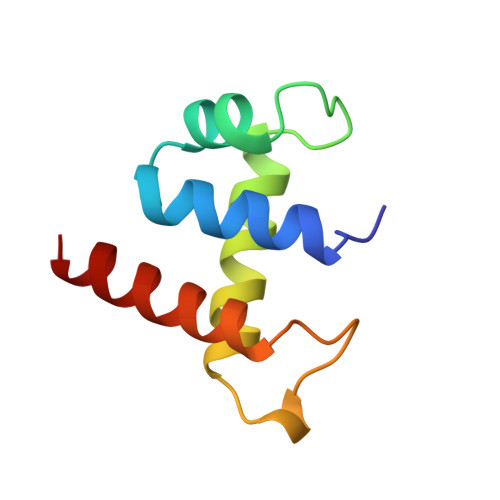Structure of the DNA-Binding Domain of Ngtrf1 Reveals Unique Features of Plant Telomere-Binding Proteins.
Ko, S., Jun, S., Bae, H., Byun, J.-S., Han, W., Park, H., Yang, S.W., Park, S., Jeon, Y.H., Cheong, C., Kim, W.T., Lee, W., Cho, H.-S.(2008) Nucleic Acids Res 36: 2739
- PubMed: 18367475
- DOI: https://doi.org/10.1093/nar/gkn030
- Primary Citation of Related Structures:
2CKX - PubMed Abstract:
Telomeres are protein-DNA elements that are located at the ends of linear eukaryotic chromosomes. In concert with various telomere-binding proteins, they play an essential role in genome stability. We determined the structure of the DNA-binding domain of NgTRF1, a double-stranded telomere-binding protein of tobacco, using multidimensional NMR spectroscopy and X-ray crystallography. The DNA-binding domain of NgTRF1 contained the Myb-like domain and C-terminal Myb-extension that is characteristic of plant double-stranded telomere-binding proteins. It encompassed amino acids 561-681 (NgTRF1(561-681)), and was composed of 4 alpha-helices. We also determined the structure of NgTRF1(561-681) bound to plant telomeric DNA. We identified several amino acid residues that interacted directly with DNA, and confirmed their role in the binding of NgTRF1 to telomere using site-directed mutagenesis. Based on a structural comparison of the DNA-binding domains of NgTRF1 and human TRF1 (hTRF1), NgTRF1 has both common and unique DNA-binding properties. Interaction of Myb-like domain with telomeric sequences is almost identical in NgTRF1(561-681) with the DNA-binding domain of hTRF1. The interaction of Arg-638 with the telomeric DNA, which is unique in NgTRF1(561-681), may provide the structural explanation for the specificity of NgTRF1 to the plant telomere sequences, (TTTAGGG)(n).
Organizational Affiliation:
Department of Biochemistry, Department of Biology, Protein Network Research Center, College of Life Sciences and Biotechnology, Yonsei University, Seoul 120-749, Korea.


















